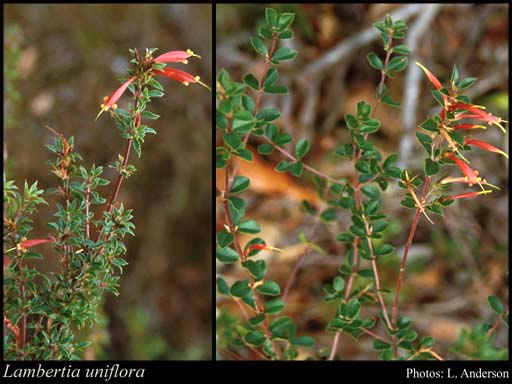- Reference
- Trans.Linn.Soc.London 10:188 (1810)
- Conservation Code
- Not threatened
- Naturalised Status
- Native to Western Australia
- Name Status
- Current
Spreading, straggly, non-lignotuberous shrub, to 3 m high. Fl. red/orange, Jan or Mar to Aug or Oct to Dec. Yellow-white sandy gravel, brown sandy clay, black sand, laterite, granite, quartzite. Coastal dunes, rocky outcrops, rocky slopes of ranges, along tracks.

Scientific Description
Shrubs; branchlets glabrous or hairy. Leaves whorled, 15-30 mm long, 7-12 mm wide, hairy; lamina flat, widest around the middle or clearly widest above the middle, entire, the margins flat; apex pungent, 1-1.2 mm long. Inflorescences red; innermost bracts 17-20 mm long. Perianth 35-40 mm long, hairy; pistil 40-44 mm long, style hairy. Flowers in January, February, March, April, May, June, July, August, September, October, November or December. Occurs in the South-west (SW) Botanical Province(s), in the Jarrah Forest (JF), Mallee (MAL), Warren (WAR) or Esperance Plains (ESP) IBRA subregion(s).
Distribution
- IBRA Regions
- Esperance Plains, Jarrah Forest, Mallee, Warren.
- IBRA Subregions
- Fitzgerald, Southern Jarrah Forest, Warren, Western Mallee.
- IMCRA Regions
- WA South Coast.
- Local Government Areas (LGAs)
- Albany, Cranbrook, Denmark, Gnowangerup, Plantagenet.